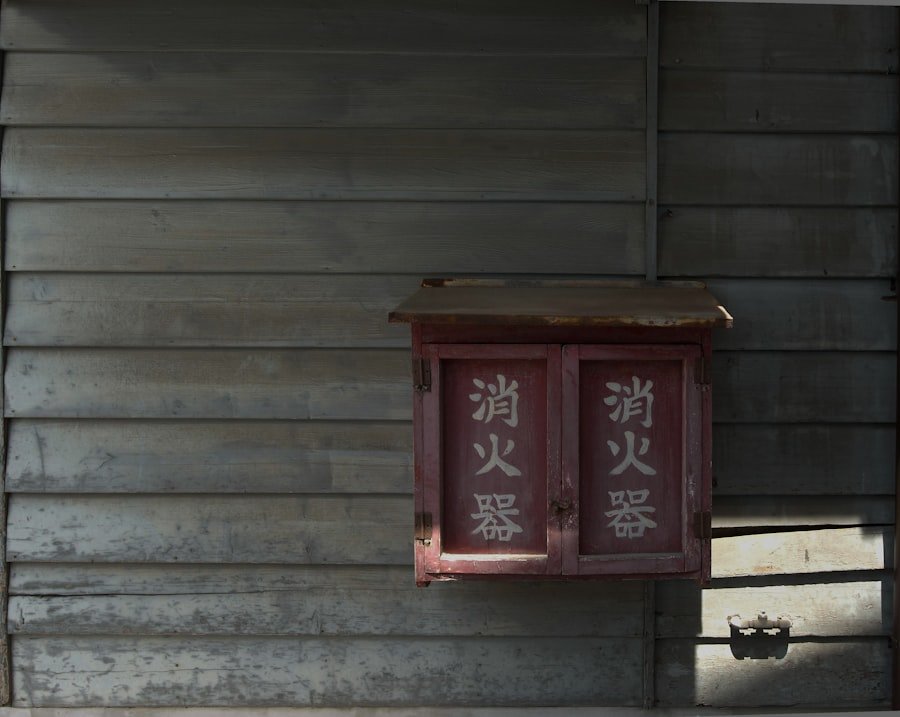The concept of Yin and Yang is a fundamental principle in Chinese philosophy, representing the duality and interconnectedness of opposites. Yin is often associated with qualities such as darkness, femininity, and passivity, while Yang embodies light, masculinity, and activity. This duality is not merely a binary opposition; rather, it reflects a dynamic balance that is essential for harmony in the universe.
The interplay between Yin and Yang can be observed in various aspects of life, from the changing seasons to the cycles of day and night. This philosophy teaches that everything exists in relation to its opposite, and that harmony arises when these forces are in balance. In practical terms, the concept of Yin and Yang extends beyond mere philosophical musings; it influences various aspects of Chinese culture, including medicine, art, and even social relationships.
For instance, in traditional Chinese medicine, health is viewed as a state of balance between Yin and Yang within the body. An imbalance can lead to illness, prompting practitioners to restore equilibrium through various treatments. This holistic approach underscores the importance of understanding the interconnectedness of all things, encouraging individuals to seek balance not only within themselves but also in their interactions with the world around them. Spaces are filling up fast! Register for Chinese classes at the LC Chinese School in Oslo today.
Table of Contents
ToggleSummary
- The concept of Yin and Yang in Chinese philosophy emphasises the balance and harmony of opposing forces in nature and life.
- The influence of the five elements on Chinese medicine highlights the interconnectedness of nature and the human body, with each element representing different aspects of health.
- The symbolism of nature in Chinese art and literature reflects the deep reverence and appreciation for the natural world in Chinese culture.
- The importance of Feng Shui in Chinese culture demonstrates the belief in the impact of the environment on human well-being and prosperity.
- The connection between nature and Chinese calligraphy showcases the inspiration drawn from natural elements in the art form, reflecting the harmony between human expression and the natural world.
The Influence of the Five Elements on Chinese Medicine
The Five Elements—Wood, Fire, Earth, Metal, and Water—form another cornerstone of Chinese philosophy and medicine. Each element is associated with specific qualities, emotions, and organs within the body, creating a complex system that seeks to explain the natural world and its impact on human health. For example, Wood is linked to growth and creativity, while Fire represents warmth and passion.
Earth embodies stability and nourishment, Metal signifies strength and resilience, and Water is associated with fluidity and adaptability. This elemental framework allows practitioners to diagnose and treat ailments by understanding how these elements interact within the body. In traditional Chinese medicine, the balance of the Five Elements is crucial for maintaining health.
Each element corresponds to particular organs and bodily functions; for instance, the Liver is associated with Wood, while the Heart corresponds to Fire. When one element becomes dominant or deficient, it can disrupt the harmony of the body, leading to physical or emotional ailments. Treatments may involve herbal remedies, acupuncture, or dietary adjustments aimed at restoring balance among the elements.
This holistic approach not only addresses symptoms but also considers the underlying causes of illness, promoting overall well-being.
The Symbolism of Nature in Chinese Art and Literature

Nature has long been a source of inspiration in Chinese art and literature, serving as a powerful symbol of beauty, harmony, and the transient nature of life. Traditional Chinese paintings often depict landscapes filled with mountains, rivers, and flora, reflecting a deep appreciation for the natural world. These artworks are not merely representations of scenery; they embody philosophical ideas about humanity’s relationship with nature.
The use of negative space in these paintings highlights the importance of emptiness and suggests that true beauty lies in simplicity and balance. In literature, nature is frequently employed as a metaphor for human emotions and experiences. Poets often draw parallels between natural phenomena and personal feelings, using imagery of blooming flowers to represent love or turbulent waters to signify turmoil.
This connection between nature and human experience underscores a profound understanding of life’s cyclical nature. The changing seasons serve as reminders of impermanence, encouraging individuals to embrace each moment fully. Through both art and literature, nature becomes a lens through which to explore deeper philosophical themes about existence and the human condition.
The Importance of Feng Shui in Chinese Culture
Feng Shui, which translates to “wind” and “water,” is an ancient practice rooted in Chinese philosophy that seeks to harmonise individuals with their environment. It is based on the belief that the arrangement of space can significantly influence one’s energy flow or “Qi.” By understanding how to position objects and structures in relation to natural elements, practitioners aim to create spaces that promote health, prosperity, and well-being. This practice extends beyond mere aesthetics; it embodies a holistic approach to living that considers both physical surroundings and spiritual energy.
In Chinese culture, Feng Shui plays a vital role in various aspects of life, from architecture to interior design. Homes are often designed with Feng Shui principles in mind to ensure a harmonious living environment. For instance, the placement of furniture can affect the flow of Qi within a room, while the orientation of buildings can influence their relationship with natural elements like sunlight and wind.
Additionally, Feng Shui is often consulted when making significant life decisions such as marriage or starting a business. By aligning one’s life with the natural world through Feng Shui, individuals seek to cultivate balance and harmony in their daily lives.
The Connection Between Nature and Chinese Calligraphy
Chinese calligraphy is not only an art form but also a profound expression of cultural identity deeply intertwined with nature. The brush strokes used in calligraphy are often inspired by natural elements such as mountains, rivers, and trees. Each character is imbued with meaning that reflects both linguistic significance and aesthetic beauty.
The fluidity of brushwork mimics the movement found in nature, creating a visual representation of harmony between human expression and the natural world. Moreover, calligraphy serves as a meditative practice that encourages mindfulness and connection with one’s surroundings. As calligraphers engage with their materials—ink, brush, and paper—they often find inspiration in nature’s rhythms.
The act of writing becomes a dialogue between the artist and the environment, allowing for a deeper understanding of both self and nature. This connection highlights the importance of patience and presence in both art and life, reminding practitioners that beauty can be found in simplicity and authenticity.
The Role of Nature in Chinese Proverbs and Idioms

Chinese proverbs and idioms often draw upon natural imagery to convey wisdom and life lessons. These expressions encapsulate cultural values while reflecting an intrinsic understanding of nature’s cycles. For instance, the saying “A journey of a thousand miles begins with a single step” uses the metaphor of travel to illustrate the importance of perseverance and taking initiative.
Similarly, proverbs that reference seasons or weather patterns highlight the transient nature of life and encourage individuals to adapt to change. Nature serves as a rich source of metaphors in these sayings, allowing for complex ideas to be communicated succinctly. The use of natural imagery not only enhances the beauty of language but also reinforces cultural connections to the environment.
By embedding lessons within references to nature, these proverbs encourage individuals to reflect on their relationship with the world around them. They remind us that just as nature undergoes cycles of growth and decay, so too must we navigate our own journeys with resilience and grace.
The Representation of Nature in Chinese Folklore and Mythology
Chinese folklore and mythology are replete with stories that celebrate nature’s power and mystery. Many tales feature deities or mythical creatures associated with natural elements—such as dragons representing water or phoenixes symbolising fire—highlighting humanity’s reverence for the forces that shape their world. These narratives often convey moral lessons about living harmoniously with nature or respecting its boundaries.
For example, stories about wise sages who commune with nature illustrate the importance of humility and understanding one’s place within the larger cosmos. Additionally, folklore often reflects seasonal changes through festivals that honour agricultural cycles or natural phenomena. Celebrations such as the Mid-Autumn Festival pay homage to harvests while fostering community bonds through shared appreciation for nature’s bounty.
These stories not only entertain but also serve as cultural touchstones that reinforce values related to environmental stewardship and interconnectedness with all living beings.
The Impact of Nature on Chinese Architecture and Design
Chinese architecture is profoundly influenced by nature, reflecting principles rooted in harmony with the environment. Traditional structures are often designed to blend seamlessly into their surroundings, utilising natural materials such as wood and stone while incorporating elements like water features or gardens. This integration fosters a sense of tranquillity that resonates with both inhabitants and visitors alike.
The layout of buildings often follows Feng Shui principles to ensure optimal energy flow while respecting natural landscapes. Moreover, gardens play an essential role in Chinese architecture as spaces for contemplation and connection with nature. Classical Chinese gardens are meticulously designed to evoke natural landscapes through carefully arranged rocks, water features, and plantings that mimic mountains or rivers.
These gardens serve as microcosms where individuals can escape urban life while experiencing nature’s beauty firsthand. By prioritising harmony between built environments and natural elements, Chinese architecture embodies a philosophy that values sustainability and respect for the earth.
The Relationship Between Nature and Chinese Cuisine
Chinese cuisine is deeply intertwined with nature’s bounty, reflecting regional diversity while celebrating seasonal ingredients. Each dish tells a story about its origins—whether it be fresh vegetables harvested from local farms or fish caught from nearby waters—emphasising a connection between food sources and their environments. Traditional cooking methods often highlight natural flavours without overwhelming them with excessive seasoning or processing.
Furthermore, many culinary practices are rooted in principles derived from traditional Chinese medicine that emphasise balance among flavours—sweetness, sourness, bitterness, saltiness—and their corresponding effects on health. Seasonal eating encourages individuals to consume foods that align with nature’s cycles; for instance, warming dishes are favoured during winter months while lighter fare prevails in summer heat. This relationship between cuisine and nature not only nourishes bodies but also fosters an appreciation for local ecosystems.
The Significance of Nature in Chinese Festivals and Traditions
Nature plays an integral role in Chinese festivals and traditions throughout the year—each celebration reflecting seasonal changes while honouring agricultural practices or celestial events. Festivals such as Qingming (Tomb-Sweeping Day) encourage families to pay respects to ancestors while enjoying springtime blooms—a reminder of renewal after winter’s dormancy. Similarly, during the Dragon Boat Festival, communities come together to celebrate rice harvests by racing boats on rivers—a vibrant expression of gratitude towards nature’s gifts.
These celebrations often incorporate elements from folklore that highlight humanity’s relationship with nature—whether through rituals invoking good fortune or performances showcasing traditional music inspired by natural sounds. By participating in these festivities, individuals reaffirm their connections not only to their cultural heritage but also to the rhythms inherent within nature itself.
The Lessons We Can Learn from Chinese Philosophy about Living in Harmony with Nature
Chinese philosophy offers profound insights into living harmoniously with nature—encouraging individuals to cultivate awareness of their surroundings while embracing interconnectedness among all living beings. Concepts such as Yin-Yang remind us that balance is essential for well-being; just as ecosystems thrive when diverse elements coexist peacefully so too must we strive for equilibrium within ourselves. Moreover, teachings derived from practices like Feng Shui emphasise intentionality regarding our environments—urging us to create spaces that nurture rather than hinder our growth.
By recognising our dependence on natural resources while honouring their limits we can foster sustainable practices that benefit both ourselves and future generations. Ultimately these lessons inspire us towards greater mindfulness—encouraging reflection upon how our actions impact not only our lives but also those around us—reminding us that true harmony arises when we respect both ourselves as individuals as well as our collective place within this vast tapestry called life. As we explore these rich philosophical traditions rooted deeply within Chinese culture it becomes clear that embracing nature’s wisdom can lead us towards more fulfilling lives—one where we learn from its cycles while striving towards balance amidst an ever-changing world.
For those interested in delving deeper into these concepts through language learning or cultural exploration consider enrolling in courses at LC Chinese School located in Oslo where you can immerse yourself further into this fascinating world! Their comprehensive Chinese courses offer an excellent opportunity not just for language acquisition but also for understanding how these philosophies manifest within everyday life—bridging gaps between tradition modernity while fostering appreciation for both language culture alike!







